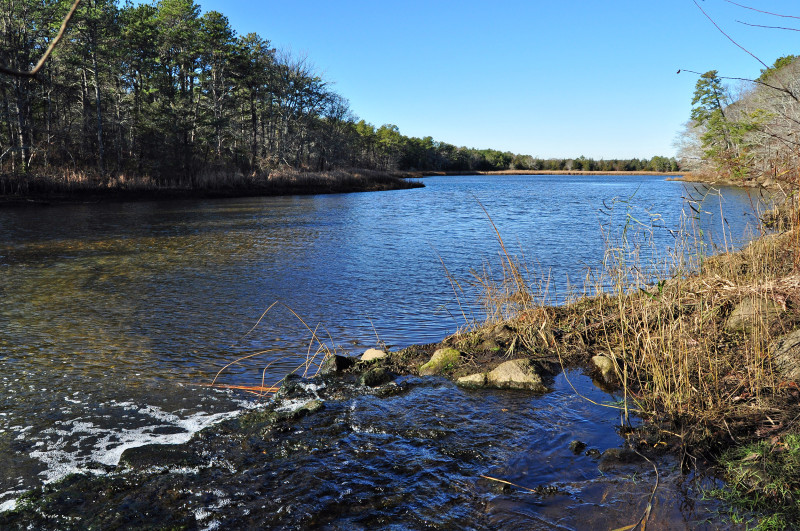Project to reduce pollution in upper Buzzards Bay waterways moves ahead with $419K grant
The waterways of the upper portion of Buzzards Bay – the Agawam River and Wareham River, Buttermilk Bay and Little Buttermilk Bay, Sippican Harbor, Aucoot Cove, and the Weweantic River – make up one-third of the entire Buzzards Bay watershed. Every single one of these waterways is on the state’s “dirty waters” list due to nitrogen pollution, the greatest long-term threat to the Bay’s health.

The Coalition is evaluating a plan to move the Wareham Water Pollution Control Facility’s discharge pipe from the Agawam River to a less sensitive location.
To help clean up these waterways, the Coalition is spearheading an innovative partnership that would reduce tens of thousands of pounds of nitrogen pollution each year. A $419,006 grant from the Southeast New England Program (SNEP) is providing the key piece of funding in an effort to expand world-class wastewater treatment to more upper Bay communities in Wareham, Bourne, Plymouth, and Marion.
Wastewater, particularly from traditional home septic systems, is the largest source of nitrogen pollution to Buzzards Bay. Nitrogen pollution turns the water cloudy and murky and harms habitat for underwater species like fish, crabs, quahogs, and bay scallops.
In the upper Bay region, there is a local solution to this nitrogen pollution problem: the Wareham wastewater treatment plant. The facility was upgraded in 2004 and is now one of the top-performing wastewater plants in the state, removing as much as 95% of nitrogen from its treated wastewater. The problem is that the plant discharges its treated wastewater into the Agawam River, which is too small and sensitive to handle the load.
To get more upper Bay homes off septic systems and connected to Wareham’s state-of-the-art wastewater treatment plant, the discharge pipe needs to be moved from the Agawam River to a less sensitive location.
The first phase of this project, funded with a SNEP grant in 2015, studied whether it would be feasible to move the discharge pipe from the narrow, upstream waters of the Agawam River to the site of the Massachusetts Maritime Academy’s existing wastewater treatment plant discharge pipe at the Cape Cod Canal. Through sound science, the project showed that relocating the Wareham discharge pipe would not harm the upper Bay’s health – in fact, it could reduce approximately 80,000 pounds of nitrogen to the Bay per year.
Phase two of this project, which received this month’s grant, expands the original partnership between the Coalition, the Massachusetts Maritime Academy, and the towns of Wareham, Bourne, and Plymouth to include the town of Marion and the Massachusetts Division of Marine Fisheries. Together, these partners will collaborate on science, research, and planning to determine how to move the discharge pipe, expand the Wareham facility’s capacity, and run a regional wastewater system.
Not only will this project benefit the health of upper Bay waterways, but it will also help promote economic development in the Bourne community of Buzzards Bay, where the Massachusetts Maritime Academy is located. By connecting the academy to the Wareham sewer plant, the school can save money on wastewater costs and expand its student body.
SNEP Watershed Grants are funded by the U.S. Environmental Protection Agency through a collaboration with Restore America’s Estuaries.